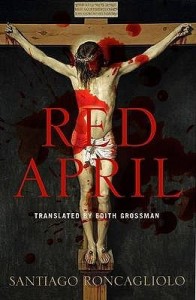 April has been a wonderful month for me; I celebrated my third blogiversary this month (not very publically). However the big news is the announcement of my Russian lit project, I am actually very excited to dive into this world and see what I discover. I have been feeling unmotivated with my blogging lately and I have fallen behind in my reviewing (currently ten reviews I need to write). I am struggling to find the motivation and the inspiration to blog but this Russian lit project has got me so excited. Even if I do not know how if it will work in terms of blogging or BookTube, my excitement is all directed towards what I will read and learn.
April has been a wonderful month for me; I celebrated my third blogiversary this month (not very publically). However the big news is the announcement of my Russian lit project, I am actually very excited to dive into this world and see what I discover. I have been feeling unmotivated with my blogging lately and I have fallen behind in my reviewing (currently ten reviews I need to write). I am struggling to find the motivation and the inspiration to blog but this Russian lit project has got me so excited. Even if I do not know how if it will work in terms of blogging or BookTube, my excitement is all directed towards what I will read and learn.
As far as reading goes, I was in a weird place where while I read an average amount of books, I still feel like I did not read much. I started the month off finishing The Whispering City by Sara Moliner, a Spanish crime novel translated by Mara Faye Lethem, that I had high hopes for but never really lived up to me expectation. However, I did follow that book up with another historical fiction novel, The Zone of Interest by Martin Amis which was my first attempt for this author and not sure if it was the best place to start. It had a very interesting premise but exploring Jewish heritage and culture during World War II has been done to death.
The next novel I read, I can actually review as part of my Russian lit project and that is the Ukrainian novel Death and the Penguin by Andrey Kurkov (translated by George Bird). This novel explores a struggling writer named Viktor who was given a king penguin to look after when the Kiev Zoo ran out of money and could not afford to feed the animals. Viktor gets a job writing obituaries and the book has the wonderful contrast between life and death. This is a dark comedy and I love the way Kurkov handled the balance between the satire and the message. Next was What You See in the Dark by Manuel Muñoz, which tries to imitate the style of Alfred Hitchcock but I do not think worked. Hitchcock has a very visual style, playing with shadows and atmosphere and while this novel is able to replicate this to some extent, it does not work that well on paper. I followed that book with Haruki Murakami’s book Kafka on the Shore (translated by Philip Gabriel) which I love and have already posted a review for.
I attempted my first Ali Smith novel with There But For The, which is a witty and satirical book that I am still trying to get my head around. I love the style Smith writes in and I know I am going to read a whole lot more of her books. I then read Helen MacDonald’s memoir on grief H is for Hawk. I made the mistake of trying to annotate this; I had never tried to write in the margins of any book and while I loved the experience it was not the right choice. I found myself questioning MacDonald’s emotions and quickly decided I will try annotating again but with a work of fiction. I then moved onto Boyhood Island by Karl Ove Knausgård (translated by Don Bartlett) which is the third book in the autobiographical novel series My Struggle. Finally, the last book was a novel that reminded me that I was not that intelligent and that is 10:04 by Ben Lerner. This was an extremely sophisticated and intelligent novel, I am still struggling to wrap my head around it completely and I am beginning to fear I never will comprehend it fully.
In retrospect I had a pretty great reading month, even if I felt like I did not read enough. Going into May, I have Anna Karenina, The Firebird, Get Shorty and Manuscripts Don’t Burn all on the go. So I know I am going to have a good month, I also have some vacation time and I cannot wait. How was April for you, did you read anything amazing? Let me know in the comments below.

 Title: Kafka on the Shore (
Title: Kafka on the Shore ( Title: The Yellow Wallpaper and Other Stories (
Title: The Yellow Wallpaper and Other Stories ( Title: The Unamericans (
Title: The Unamericans ( Title: Red April (
Title: Red April ( Title: The World According To Garp (
Title: The World According To Garp (